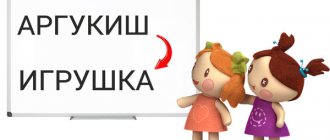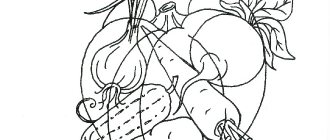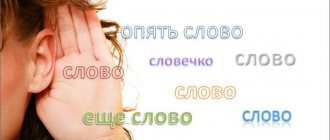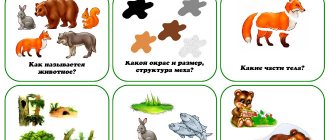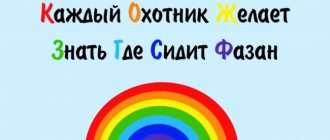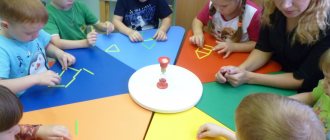Mnemonics for beginners is a system of various methods that helps to remember information using various associations and is used in teaching children from preschool age. This technique uses previously acquired knowledge to create a chain of connections. Thanks to such logical series, you can easily remember information that is difficult to perceive.
There are many mnemonic techniques. For example, Cicero’s method is based on spatial imagination, while Aivazovsky’s method works by training visual memory. Number sequences, foreign words or complex terms are easier to remember with the help of consonant or familiar words and numbers.
In a time when there was no written language, ancient priests and storytellers had to memorize enormous amounts of information. With the advent of the first texts put on paper, the art of using mnemonics did not lose its relevance, because the raw materials for writing them were very expensive. Even in Ancient Greece, notes were made using mnemonics. The art of associative memorization was mastered by the monks of the Middle Ages. At all times, people who could quickly remember and store useful and interesting knowledge in their heads were valued.
Pros and cons of mnemonics
Mnemonics are actively used in teaching children. For example, one of the most famous phrases for studying the sequence in the color spectrum is “Every Hunter Wants to Know Where the Pheasant Sits.” It is she who helps to accurately tell how a rainbow “works.”
The role of methodology in the development of children:
- helps you remember information quickly and for a long time;
- improves memory and attentiveness;
- develops speech, expands vocabulary and horizons, teaches how to pronounce sounds and words correctly;
- forms logical and imaginative thinking;
- improves imagination, intellectual and creative abilities;
- develops character, teaches sociability, helps to overcome isolation and shyness.
When used correctly, mnemonics have very few disadvantages.
- At the initial stage of use, children have a small vocabulary, so it can be difficult for them to work using this method.
- There is no need to abuse the method and use it in cases where it is too easy to understand the properties and remember the signs - this hinders the child’s development.
- Sometimes it is not possible to use the technique. For all-round development, it is necessary to teach the child to learn information mechanically; this skill will also be useful in the future.
The human brain consists of two hemispheres. The left is responsible for logic and speech, and the right helps to perceive different colors and form images using the imagination. When using mnemonic techniques, both halves are activated simultaneously. As a result, thought processes bring maximum benefit in the form of acquired knowledge.
Books on mnemonics for children
- “Learning from a fairy tale”, T.V. Bolshakova;
- “Supermemory for everyone”, E.E. Vasilyeva, V. Yu. Vasiliev;
- “Remember everything. Practical guide to memory development”, Arthur Dumchev;
- “Brain development. How to Read Faster, Remember Better, and Achieve Bigger Goals by Roger Sipe;
- “Einstein walks on the moon. The Science and Art of Memory,” Joua Foer;
- A. R. Luria. “A little book about a big memory”;
- How to Develop Super Memory by Dominic O'Brien.
The books describe in detail common techniques, proprietary methods, give tips on mastering and demonstrate the work with examples.
From what age is it used?
Teaching children using mnemonics can begin from a very early age. Getting to know exercises for children starts with simple techniques.
First, they use mnemonic squares, which can be introduced to children at the age of three. In the first lessons, children study simple images that represent one word, phrase or simple phrase. You can place pictures in a square and learn poems with movements.
Later, at 4-5 years old, children become familiar with mnemonic tracks - systematized pictures of four drawings. With the help of such images, the concept of sequences is formed. Thanks to group illustrations, you can easily tell a short story, remember the steps of washing your hands, the process of dressing or washing your face.
Children aged 6-7 years begin to study mnemonic tables that allow them to perform more complex actions:
- retell various works;
- memorize poems and complex words;
- guess and make riddles;
- find rhymes for words;
- invent fairy tales or stories;
- distribute objects into groups according to certain characteristics;
- study numbers;
- become familiar with the basic rules of life safety and behavior in various places, and methods of self-service.
Children learn to express their thoughts correctly and beautifully and use new words in speech. Attention and intelligence develop, the ability to highlight the main thing and compare improves.
What it is
Mnemonics, or mnemonics, is a science that teaches the art of memorization using certain techniques and methods. Its task is to improve memory through associations. She rejects rote learning, which has already shown its ineffectiveness. Which adult remembers Tatyana's letter to Onegin by heart? Units! And all because this information has no significance for the majority and is not tied to objects or sensations.
Mnemonics is a technique for memorizing information when various objects and facts are closely associated with ideas in a person’s head. They can be visual, auditory or kinesthetic. This simplifies the memorization process and increases memory capacity. The simplest example: from childhood, everyone remembers the order in which the colors in the rainbow are located, thanks to the saying about the hunter and the pheasant. The initial letter of each color is associated with the initial letter of the words in that phrase. This is one of the main techniques of mnemonics. In this way, any information can be imprinted in memory.
In mnemonics, two objects of memorization are used - numbers and words. Even if the task is to remember a picture, it must first be mentally transformed through associations into a list or some kind of phrase.
Features of application
You can achieve results during mnemonics classes if you follow the basic rules for using the technique.
- Subsequence. You cannot start classes with difficult tasks. First they work with mnemonic squares, single images, then with mnemonic tracks and mnemonic tables.
- Rationing. Children are not shown more than two tables per day, and the number of images in each block should be no more than 9 pieces. Too much information is difficult for a child to absorb, so classes will be ineffective.
- Colorfulness. The pictures should interest the child in their appearance. They use bright colors, rich and expressive images. Tables in black and white will not be able to attract the attention of children and have the desired impact; they can only be used for children of older preschool age.
- Emotionality. Children should feel the positive energy of such activities.
- Diversity. Pictures or series of images for one lesson should be on different topics. Guys will quickly lose interest in the same type of training. It is also advisable to select tables that require different actions. For example, the first pictures help to remember the sequence of food intake, and the next group helps to tell about how insects move.
- No coercive measures: just a game. Classes can only be conducted when children are involved in the process with pleasure and interest. Everything should happen in a playful way. If the children's attention wanes, it is better to stop the lesson and continue at another time.
It is enough to adhere to these simple principles to achieve maximum learning results.
Tips for using mnemonics
- Start with the basics. Don't try to remember large amounts of data at once. Practice on single images, short lists of words, dates. Focus on the techniques that mnemonics offers for beginners: the method of stories or visualization. Increase the difficulty gradually, noticing progress at previous stages.
- For training, choose bright images; for children, always color ones. Such illustrations attract attention better, allow you to focus on details, and highlight more associative connections.
- Don't get overwhelmed. For children, 2 mnemonic tables per lesson are enough, no more than 9 squares per piece. A large amount of data causes boredom and in the form of a game.
- Make mnemonics classes varied. Change exercises, topics, memorize texts, illustrations and numbers.
- Remember that you need to exercise regularly. Perform 1-3 exercises daily, gradually limiting the time or increasing the load.
How does memory work in preschool children?
Before moving on to a description of the principle of using mnemonic tables, it is necessary to dwell on the features of memory development in preschoolers. First of all, it is important to say that in the majority of preschool children, figurative memory predominates (this can be visual, as well as auditory, olfactory and other images of perception). At the same time, children remember information mainly mechanically, involuntarily. That is, the child remembers what interests him or what makes a strong impression on him. Therefore, an unusual and bright form of presentation is very important. With the development of speech, children's ability to perceive words increases: a preschooler can memorize poetry, he easily remembers the plots of fairy tales and cartoons. However, according to psychological and pedagogical research, it is much easier for children to reproduce information if in the process they can rely on visual diagrams. In older preschool age, the child begins to form voluntary memory. With the development of the ability to self-control, the baby learns to independently remember information that may be useful to him. It is visual aids (diagrams, sketches, notes) that allow children to better remember the necessary material.
Preschool children have the most developed figurative memory, therefore, in order for the child to better remember any information, it is necessary to use various visual aids, including mnemonic tables.
Basic rules for conducting classes
- Class notes must be taken.
- Work begins with simple mnemonic squares, then mnemonic chains are introduced. When the child understands the essence of the tasks, you can move on to mnemonic tables.
- All drawings must be color, clear and understandable.
- The number of squares in the table should not be more than nine. This is the maximum allowable amount of visual information for a preschooler.
- No more than two mnemonic tables are used in one lesson. Re-examination or work with them can only be done at the request of the child.
- Every day the tables and assignments change by topic. At the beginning of the lesson, you can review diagrams of past lessons, repeat a learned poem or story.
- In older groups of preschool educational institutions, children should be encouraged to draw tables themselves based on the teacher’s story or based on their own invented stories.
It is very important that parents also become familiar with this technique and take an active part in the development of the child. According to the observations of child psychologists, children who work with associative schemes adapt faster at school, their perseverance, concentration and communication abilities are well developed.
Mnemonic tables for composing stories
At the beginning of the lesson with mnemonic tables, the teacher invites the children to carefully examine all the drawings and talk about what they saw. Then the adult deciphers the table in detail and composes an interesting story for the children.
For example: “Autumn has come. The sun began to warm less, all the animals in the forest began to prepare for winter. The squirrel has prepared a lot of nuts, which she hides in her house on the Christmas tree. The bunny changed his gray fur coat to a white one so that he would not be visible in the snow. And the big brown bear is preparing a den for himself, in which he will sleep until spring. The bear will not freeze, because the fallen snow will cover the bear’s house like a blanket. So the bear will sleep until spring.”
Next, the teacher invites the kids to reproduce the entire story, looking at the pictures. This technique is successfully used not only in older groups of preschool educational institutions, but also in speech therapy for speech development, correcting incorrect pronunciation and in the treatment of stuttering in preschoolers.
Mnemonic techniques
- Eidotehnika (eido - image) - representation of an object outside the zone of perception, i.e. application of imaginative thinking. The exercise is aimed at creating images, objects, and natural phenomena.
- Associative chain technique . Words are connected in order, one after another, without skipping. The result is a story or fairy tale. In this game, children quickly remember a chain of words.
- The Cicero method is the placement of information in space. The essence of the method is the imaginary placement of images in a specific place.
- Method of transformation (transformation). Exercise promotes the development of memory and logical thinking. The words seem to flow from one another, something unites them.
- Support method (numeric-letter method). Children remember information by associating the meaning of certain words, sounds and numbers.
- “Croqueting” technique (from the French word croquis - drawing, sketch). Method of graphic associations. The essence is to recode the information received when drawing objects and natural phenomena.
Mnemonic table, mnemonic square, mnemonic track, collage - these are the teaching tools of the crocheting method.
Mnemonic tables are images containing information. They reduce learning time and at the same time develop memory, attention, and creative thinking. Help transform abstract images into concrete objects.
A mnemonic square is a card with an image of encoded information.
Mnemonic track is a sequential distribution of mnemonic squares according to which the child composes a story.
Collages are aids that perform the following tasks:
- teach (thematic collages);
- remember;
- form the skill of attention distribution.
Mnemonics for schoolchildren
The modern student receives a huge amount of information on various disciplines every day. It is very difficult to remember the material received in such a volume. Mnemonics skills will help here, which make it possible to accumulate and retain information.
Mnemonics for memory development is a strong training of attention and thinking. The following techniques will help you remember the information received as much as possible:
- "Make up your own story" . How to remember a list of unrelated words? The simplest thing is to come up with a story. For example, vocabulary words starting with the letter “l”: – labyrinth – on the rides we got confused in the labyrinth; – laboratory - he secretly entered a secret laboratory; – lagoon – the blue lagoon sparkles with sunlight. Next, the student reads the resulting text and retells it. This way he remembers the right words.
- Association cards . This method of taking notes helps you remember what you read. The main topic is written in the center of the sheet, and then secondary topics branch off from it in different directions, like branches of a tree.
- Block diagram . This method helps to structure numbers, tables, symbols, and keywords. The arrows in the diagram indicate the relationship between various data.
- Another proven way to remember information is to try to rhyme it. It is necessary to compose several lines of the necessary information and rhyme them. This should create a short verse. Then repeat several times.
- BCC - alphanumeric code . The technique is used to encrypt numbers and digits into words.
How to master
Firstly, you can take mnemonics lessons from specialists who are closely involved in applying its systems and techniques in practice. They can be found on the Internet: buy a training course, sign up for an online training, arrange lessons via Skype. There are a huge number of ways to master it.
Secondly, you can learn mnemonics yourself, at home. However, please note that this will be a longer journey than with a specialist. Some techniques may seem too complicated, and then there is a risk of giving up without developing your memory. Sometimes regularity and perseverance are not enough. When there is a teacher, there is a schedule of classes, assignments, etc. But here you only have to rely on self-discipline.
To learn mnemonics yourself, you need to start by choosing:
- directions (it is better for a beginner to choose folk or pedagogical, rather than modern or classical);
- the type of memory you will be developing;
- the technique that you can master best (rhymes, consonances, visual associations);
- the author's system in which you will work.
Next, you need to set aside a specific time for studying. It is best to do this immediately before bed. For beginners, these steps will be enough.
Visualization techniques
When memorizing poems, each line is depicted with pictures.
Mnemonics techniques are based on the use of certain types of memorization . Of course, the most effective way to use any technology for raising and developing a child is through play. And mnemonics in this sense are a real storehouse of ideas.
- "Get a group together." The child is given separate pictures (for example, symbols of the seasons, clothes, types of activities) - he needs to group the pictures and explain why they are together.
- “Draw your impressions.” This technique perfectly expands the baby's vocabulary. And, by the way, it forms family traditions. Invite your little one to sketch their impressions of the day together, so that later they can tell what was good and bad about it. Each time, try to add one or more concepts and words that are new to your child.
- "Learn a poem." To make it easier to memorize poems, use visual tables in which each line is presented in the form of a picture or symbol. Try to always supplement the image with a word (if the baby can read) or a letter (if the child has not yet mastered this skill).
- "Memory Grid". Show your child the pictures, say what they are and turn them over. The child’s task is to name the depicted object, and then test himself by opening the mnemonic picture.
- "Stories with pictures." On the Internet you can find a lot of children's stories in which words are partially replaced by pictures. This way, the baby not only learns new words, but also develops the ability to focus on reading.
- "Photo memory". Show the child a picture, then remove it and give in return another one that differs from the first in some detail. For example, the first one shows a girl with a red bow, and the second one shows the same girl, but the bow is blue.
- "Day Night". Place a series of pictures in front of your child. Then say, “Night has come.” The baby covers his eyes with his hands, and at this time you hide one picture. The child’s task is to guess what is missing.
There are several methods of working with children over one year old whose speech is just beginning to develop.
- Tactile games. This mnemonic technique is intended for the smallest toddlers who do not yet speak. Its essence lies in the fact that pictures are replaced with objects. For example, to get acquainted with different round objects, put a pebble of a suitable shape, a tennis ball, a cap from a bottle or tube of cream, etc. in a bag. Ask your baby to take this or that object out of the bag by touch.
- Sound lotto. Play sounds for your child to match the pictures to. For example, “Who talks like this”: listen to the meow of a cat, the roar of a lion and ask the child to show a picture of the animal.
- Flannelograph. Cover the magnetic board with fabric and purchase a set of pictures with magnets (you can make them yourself by gluing a magnet to the back of the image). Tell your baby stories, pausing at certain parts. The little one’s task is to choose a suitable picture depicting the object you settled on and attach it to the flannelgraph.
Rules for using mnemonic techniques
You both need to be in the right mood to work with your baby.
As you know, children quickly lose interest in one activity or another. But mnemonics requires regular practice. Therefore, try to adhere to the following rules so that your baby does not get bored:
- offer to play only when the child is not hungry and does not want to sleep;
- do not interrupt the little one if he is already busy with something - it is better to wait for a more convenient opportunity;
- make classes traditional, preferably at the same time;
- do not rush the child, give him time to comprehend the task;
- help find a solution if you see that your child has stalled or is going in the wrong direction.
